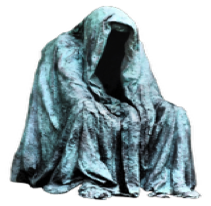

RTBM.NET

Additional Sources
Shadow Paranormal - Chapel Of St. Peter On The Wall - S06E11
Atlas Obsura - Chapel of St Peters on the wall
Essex Ghost Hunters - St. Peter Ad Murum
Location: St Peters on The Wall, Essex, UK - 1990
The Chapel of St Peter-on-the-Wall in Bradwell-on-Sea, Essex is a remarkable Christian church with a rich history. Here are some fascinating details:
Origins and Age:
The chapel dates back to the years 660–662, making it one of the oldest largely intact churches in England.
It was almost certainly originally built by Bishop Cedd in 654.
The chapel stands on the ruins of the abandoned Roman fort of Othona.
The current structure incorporates Roman bricks and stones from the original fort.
Historical Significance:
According to Bede, a ‘city’ named Ythanceaster existed on the River Penta.
After converting the East Saxon tribes of Essex to Christianity, St. Cedd built the chapel.
Following Cedd’s death in 664, the chapel became part of the Diocese of London.
Usage and Restoration:
The chapel fell into disuse after the Tudor period and was even used as a barn.
In 1920, it was restored and reconsecrated as a chapel.
The chapel is now a Grade I listed building and remains in regular use by the Othona Community and for Church of England services.
Current State:
The chapel stands in splendid isolation on the shoreline at the mouth of the Blackwater Estuary in Essex.
It continues to be a spiritual place, drawing people from all over the world
Spine-Chilling Encounters at Othona: A Haunting in Essex
Nestled in the secluded countryside of Essex, the Christian community of Othona played host to a multitude of ghostly encounters throughout the years. Among these was the chilling tale of a headless Roman horseman, believed to haunt the lonely track leading to the ancient chapel of St. Peter's on the Wall.
My own personal experiences at Othona as a young teenager added fuel to the paranormal fire. Gathering with friends in the eerie confines of St. Peter's Chapel, we would often find ourselves frozen with fear as unearthly screams pierced the silence of the marshes, and inexplicable shadows stalked the fields.
The chapel itself, constructed by St. Cedd in the 7th century, is a bastion of spiritual history and enigmatic folklore. As one of the oldest churches in Britain, its ancient walls hold centuries of secrets and whispered tales of otherworldly phenomena.
Other visitors to the area have reported strange occurrences, such as the discovery of infant remains during archaeological excavations, believed to be the source of the anguished baby cries heard by countless witnesses.
The ghostly legacy of Othona and St. Peter's Chapel on the Wall continues to haunt the memories of those who dared explore its timeless landscape. A testament to the enduring power of paranormal tales and the human fascination with the unknown, these eerie accounts will forever linger in the depths of Essex's rich, haunting history.
The mysterious atmosphere of Othona may be attributed to its layered history, tracing back to the ancient Roman fort that once stood at the site. Built in the 3rd century AD to defend against Saxon raiders, Fort Othona was a heavily fortified structure with massive walls, deep ditches, and strategically placed towers.
The fort’s storied past, which includes a period of rebellion against the Roman Empire, may have left an indelible imprint on the land. The convergence of ancient battles, powerful personalities, and the timeless struggle for power might have contributed to the palpable sense of spiritual unrest felt by visitors today.
With St. Peter's Chapel built upon the ruins of the fort, the site has become a conduit for echoes of the past, amplifying the inexplicable occurrences that have taken place there. It's as if the layers of history have merged into a haunting tapestry, forever entwining the fort, the chapel, and the spiritual energy that lingers at Othona.